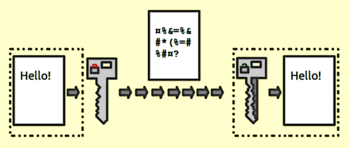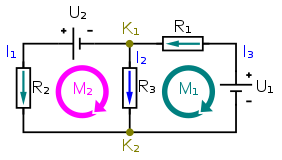MATLAB 编程/向量和矩阵/矩阵运算
如果两个矩阵的行数和列数相同,我们可以对它们进行加法和减法运算。
以下是一些示例
>> a = [7,9,4;6,2,5]
a =
7 9 4
6 2 5
>> b=[2,0,1;4,7,3]
b =
2 0 1
4 7 3
>> % Addition of a and b matrices
a+b
ans =
9 9 5
10 9 8
>> % Subtraction of a and b matrices
a-b
ans =
5 9 3
2 -5 2
对于矩阵乘法,有两种方法可以进行运算。

(i) 矩阵乘法(使用符号*或mtimes)
要求是第一个矩阵的列数必须等于第二个矩阵的行数。
如右侧示例所示,矩阵 A 有 3 X 2,矩阵 B 有 2 X 3
因此,2 X 3 <-> 3 X 2,因此满足上述要求。
此外,请注意,结果矩阵的大小取决于第一个矩阵的行数与第二个矩阵的列数。

>> A=[4,2,4;8,3,1]
A =
4 2 4
8 3 1
>> B=[3,5;2,8;7,9]
B =
3 5
2 8
7 9
>> mtimes(A,B)
ans =
44 72
37 73
>> A*B
ans =
44 72
37 73
以下示例显示了如果矩阵维度不匹配会发生什么。
如所示,矩阵 C 有 5 X 4,矩阵 D 有 3 X 2
5 X 4 <-> 3 X 2,因此无法满足条件,也无法求解。
>> %Demonstrations what if matrices dimensions are incorrect
>> C=randi(10,5,4)
C =
2 10 10 3
2 10 4 5
3 5 2 1
5 5 8 2
1 4 4 10
>> D=randi(10,3,2)
D =
10 3
6 4
1 9
>> mtimes(C,D)
Error using *
Incorrect dimensions for matrix multiplication. Check that the number of columns in the first
matrix matches the number of rows in the second matrix. To perform elementwise
multiplication, use '.*'.
(ii) 点积(注意:只有当两个矩阵大小相同时才能使用)以上面的示例为例,它不能求解方程,因为上面的矩阵 A 和 B 大小不同
>> A.*B % want to show dot product unable to solve this multiplication issues
Matrix dimensions must agree.
要生成随机整数矩阵,可以键入以下内容 randi(IMAX,M,N)
注意:IMAX 是最大整数(从 1 开始),M * N 是矩阵
以下是一些示例
>> randi(50,3,4)
ans =
9 14 42 48
36 3 35 2
2 5 16 22
使用上面的矩阵,我们可以对矩阵进行转置。转置矩阵通常只是将行转换为列,将列转换为行。图示只是演示了转置操作。转置矩阵的应用之一是密码学。

有两种方法可以实现它。一种是在要转置的矩阵末尾添加 ',或者使用函数 transpose。
回到上面的幻方示例,我们将对其进行转置。我们可以看到,它沿着对角线转置看起来像这样 : \
>> % transpose matrix c to d
>> d = c'
d =
17 23 4 10 11
24 5 6 12 18
1 7 13 19 25
8 14 20 21 2
15 16 22 3 9
矩阵的行列式是一个特殊的数字,它只针对方阵定义。
行列式用于求解线性方程组并确定矩阵的逆矩阵。
2X2 矩阵的行列式 :
3X3 矩阵的行列式 :
>> A=[6,1,1;4,-2,5;2,8,7]
A =
6 1 1
4 -2 5
2 8 7
>> det(A)
ans =
-306.0000
矩阵的逆矩阵是倒数矩阵,其公式表示为
,其中 adj 代表矩阵的伴随矩阵。
注意:并非所有矩阵都有逆矩阵,如果它们的行列式等于零。
>>%matrix inversion using manual method
>> M=[2,-1,3;-5,3,1;-3,2,3]
M =
2 -1 3
-5 3 1
-3 2 3
>> %First we find the matrix determinant
>> DM = det(M)
DM =
-1.0000
>>%Since determinant IS NOT equal to 0, we can find the matrix inverses
>> AM = adjoint(M)
AM =
7.0000 9.0000 -10.0000
12.0000 15.0000 -17.0000
-1.0000 -1.0000 1.0000
>> (1/DM)*AM
ans =
-7.0000 -9.0000 10.0000
-12.0000 -15.0000 17.0000
1.0000 1.0000 -1.0000
%shortcut using function inv which should be same as manual calculation above
>> inv(M)
ans =
-7.0000 -9.0000 10.0000
-12.0000 -15.0000 17.0000
1.0000 1.0000 -1.0000
矩阵有许多应用,例如
密码学

矩阵用于加密消息代码。程序员使用矩阵来对字母进行编码或加密。消息由一系列二进制数字组成,这些数字使用编码理论来解决通信问题。因此,矩阵的概念用于求解此类方程。
要执行此矩阵运算,消息首先被分解成固定大小的块,每个块都表示为一个数字向量。公钥包含一个矩阵,称为加密矩阵或公钥矩阵,用于转换每个数字向量。然后将得到的转换后的向量乘以模数模幂,以获得密文。
% Define the message to encrypt
message = 'I LOVE MATLAB';
% Convert the message to a vector of numbers
message_vec = double(message);
% Define the public key parameters (modulus and exponent)
% Next, we define the public key parameters, which in this case are a modulus of 104729 and an exponent of 65537.
modulus = 104729;
exponent = 65537;
% Define the encryption matrix
% We also define an encryption matrix of size 2x2.
encryption_matrix = [3 5; 7 11];
% Break the message vector into blocks of length 2
block_size = 2;
num_blocks = ceil(length(message_vec) / block_size);
message_blocks = zeros(num_blocks, block_size);
message_blocks(1:length(message_vec)) = reshape(message_vec, [], block_size);
% Apply the encryption matrix to each message block
encrypted_blocks = mod(message_blocks * encryption_matrix, modulus);
% Raise each encrypted block to the exponent
exponentiated_blocks = mod(encrypted_blocks .^ exponent, modulus);
% Convert the encrypted blocks to a single vector of numbers
encrypted_vec = reshape(exponentiated_blocks, [], 1);
% Print out the encrypted message
fprintf('Encrypted message: %s\n', char(encrypted_vec'));
要解密消息,可以使用私钥,私钥包含两个部分:模数和模某个值的指数的逆。指数的逆用于将密文乘以一个幂,该幂将反转矩阵变换并恢复原始消息块。
% Define the encrypted message
encrypted_message = [16124 4546 84313 99848 16124 4546 84313 40458 16124 4546 84313 40458 32274 40458];
% Define the private key parameters (modulus and inverse exponent)
modulus = 104729;
inverse_exponent = 47027;
% Define the decryption matrix
decryption_matrix = [17 23; 21 29];
% Break the encrypted message vector into blocks of length 2
block_size = 2;
num_blocks = length(encrypted_message) / block_size;
encrypted_blocks = reshape(encrypted_message, block_size, num_blocks)';
% Raise each encrypted block to the inverse of the exponent
decrypted_blocks = mod(encrypted_blocks .^ inverse_exponent, modulus);
% Apply the decryption matrix to each decrypted block
decrypted_blocks = mod(decrypted_blocks * decryption_matrix, modulus);
% Convert the decrypted blocks to a single vector of numbers
decrypted_vec = reshape(decrypted_blocks, [], 1);
% Convert the decrypted vector to a string and print it out
fprintf('Decrypted message: %s\n', char(decrypted_vec'));
图像处理

矩阵运算在现实生活中的一种应用是图像处理。我们将研究一个比较简单的例子,例如图像模糊。
例如,我们希望对一张假设为黑白的图像进行模糊处理,这里展示了一个矩阵的示例,其中每个像素的值代表一个灰度值,从 1 到 255。
我们将使用矩阵卷积来计算图像中每个像素周围 3x3 邻域的像素值的平均值。
要应用此滤波器,我们将矩阵在图像的每个像素上滑动,并执行矩阵乘法。例如,要模糊图像中心的像素,您将获取其周围的 3x3 邻域,将每个像素值乘以模糊滤波器矩阵中的对应值,然后将结果相加。最终的值是模糊图像的新像素值。
我们对图像中的每个像素重复此过程,最终得到一张看起来更模糊的新图像。
% Define the input matrix
input_matrix = [1 2 3; 8 9 4; 7 6 5];
% Define the blur filter matrix
blur_filter = 1/9 * [1 1 1; 1 1 1; 1 1 1];
% Apply the filter using convolution
blurred_matrix = conv2(input_matrix, blur_filter, 'same');
% Display the original and blurred matrices side by side
disp('Original Matrix:');
disp(input_matrix);
disp('Blurred Matrix:');
disp(blurred_matrix);
电路分析

在电气工程中,基尔霍夫电压定律 (KVL) 指出,电路中闭合回路上的所有电压之和必须等于零。该定律可用于为具有 m 个回路的电路编写一组线性方程。这些方程可以排列在一个矩阵中,称为回路分支关联矩阵。
根据这些示例
回路 M1 : V1 - R1*I1 - R3*I2 = 0
回路 M2 : V2 - R2*I2 - R3*I1 = 0
[ R1 -R3 0 ] [ I1 ] = [ V1 ]
[-R3 R2+R3 -R2 ] [ I2 ] = [ -V2 ]
[ 0 -R2 1 ] [ V2 ] = [ 0 ]
使用符号数学工具箱,我们可以求解这些方程
% Define the symbolic variables
syms R1 R2 R3 V1 V2 I1 I2
% Define the Kirchhoff Voltage Law equations for each loop
eq1 = V1 - R1*I1 - R3*(I1-I2) == 0;
eq2 = V2 - R2*I2 - R3*(I2-I1) == 0;
% Define the Kirchhoff Current Law equation at node K1 and K2
eq3 = I1 - I2 == 0;
% Solve the system of equations for the currents and voltages
sol = solve(eq1, eq2, eq3, I1, I2, V2);
% Display the results
I1 = double(sol.I1);
I2 = double(sol.I2);
V2 = double(sol.V2);
fprintf('I1 = %.2f A\n', I1);
fprintf('I2 = %.2f A\n', I2);
fprintf('V2 = %.2f V\n', V2);
- ↑ https://web.archive.org/web/20220712153202/https://collegedunia.com/exams/applications-of-determinants-and-matrices-and-solved-examples-mathematics-articleid-2195
- ↑ https://web.archive.org/web/20220719154910/https://www.embibe.com/exams/inverse-matrix/
- ↑ https://web.archive.org/web/20220814062118/https://www.theclickreader.com/dot-products-and-matrix-multiplication/
- ↑ https://web.archive.org/web/20220814062138/https://www.theclickreader.com/matrix-transpose-determinants-and-inverse/



